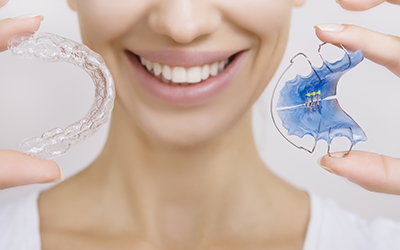Image Credit:
File ID 56395876 | © Kalcutta | Dreamstime.com

When it comes to dental health, various terms are thrown around, and one that you might have come across is “overbite.” But what does overbite look like, and why does it matter?
An overbite is a dental problem that affects the upper front teeth. The top row overlaps the lower row. While a slight overbite is considered normal, a more pronounced overbite can lead to various dental and facial issues.
Upper Teeth Protrusion: In individuals with an overbite, the upper front teeth are positioned forward, overlapping the lower front teeth. This protrusion can vary in severity, ranging from a mild overbite to a more pronounced one.
Lip Visibility: Depending on the severity of the overbite, it might affect the visibility of the lower lip. A pronounced overbite may result in the lower lip being positioned behind the upper front teeth when the mouth is closed. It might also cause cavities, leading to a Greensboro toothache.
Chin Position: In some cases, an overbite can affect the position of the chin, making it appear closer to the neck. This can impact the overall symmetry of the face.
Lower Jaw Displacement: The lower jaw may appear pushed back or receded in individuals with a significant overbite. This displacement can contribute to an imbalanced facial profile.
Facial Aesthetics: Beyond the dental aspect, an overbite can influence facial aesthetics. Individuals with a more noticeable overbite may feel self-conscious about their smile or facial profile.
Orthodontic Treatment: Braces or clear aligners are often used to gradually shift the teeth into proper alignment. This is a common and effective method for treating mild to moderate overbites.
Retainers: After orthodontic treatment, retainers may be recommended to maintain the corrected alignment and prevent the overbite from returning.
Jaw Surgery: In severe cases where the overbite is caused by a misaligned jaw, orthognathic surgery may be recommended to reposition the jaw and achieve proper alignment.
Functional Appliances: These devices are designed to modify the growth patterns of the jaw in growing individuals, addressing overbites during the developmental stages.
Lifestyle Changes: Kids dentists in Greensboro address habits such as thumb sucking or tongue thrusting as part of the treatment plan.
Recognizing what an overbite looks like is the first step towards addressing this dental condition. Whether it’s a result of genetic factors, habits, or structural issues, there are effective treatment options available. Get in touch with Piedmont Pediatric Dentistry, a great office in the Greensboro dentistry community, to discuss a treatment plan. For more information, call 336-288-9445.